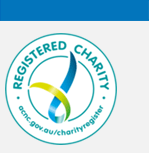Abstract
Intra-operative awareness is very rare yet represents a serious complication of general anaesthesia. The ongoing consequences of such an event may cause significant distress and long-term effects such as insomnia, depression, anxiety and post-traumatic stress disorder (PTSD). To provide safer anaesthesia, it is critical to identify contributing factors related to both the patient and the anaesthesia to prevent intra-operative awareness in at-risk patients. It is also vital to provide education to Post Anaesthesia Care Unit (PACU) nurses and surgical ward nurses about the appropriate way to manage a situation when a patient reports intra-operative awareness following anaesthesia.
General anaesthesia with neuromuscular blockade is still considered the highest risk factor for intra-operative awareness. Depth of anaesthesia monitoring has come under the spotlight to try and address this complication; however, there is yet to be a device or technique that provides 100 per cent accuracy in measuring depth of anaesthesia.
It is the collective responsibility of all perioperative staff to identify patients at high risk of intra-operative awareness, manage the intra-operative complexities and offer support and expert counselling post-operatively when intra-operative awareness is reported.
Recommended Citation
Bull, Dawn and Foran, Paula
(2022)
"Awareness under anaesthesia: The role of the perioperative nurse,"
Journal of Perioperative Nursing: Vol. 35
:
Iss.
1
, Article 6.
Available at: https://doi.org/10.26550/2209-1092.1184
Creative Commons License

This work is licensed under a Creative Commons Attribution 4.0 License.


